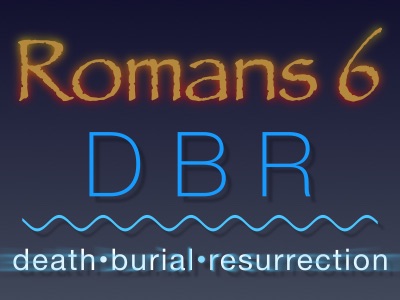
Galatians 3 offers a very short, very to-the-point, two verse lesson on baptism; in which nearly every word is absolutely packed with germane information. Let’s read it.
Galatians 3:26-27
You are all sons of God through faith in Christ Jesus,
for all of you who were baptized into Christ have clothed yourselves with Christ.
Paul, in this letter to the Galatians, is writing once again about an event which happened in the past. He is reminding them about something… and what is that something? It is the Galatians’ baptisms. Let’s get some context.
The Judaizers
The Galatian church had been infiltrated by dangerous teachers and Paul is over-the-top ticked about it. No other letter in the New Testament demonstrates the Apostle’s wrath better than Galatians. These false brothers had persuaded some in the church to fall back into Old Testament rituals which depended on “works of the flesh,” namely, circumcision. These “Judaizers,” as they were called, taught people they must be circumcised and follow the Law of Moses in order to become Christians. Paul, in furious manner, declares, trying to obey the Old Testament Law for salvation, was of absolutely no value. In fact, he tells them, if you give into this teaching, your relationship with Christ is worthless.
Galatians 5:2
Mark my words! I, Paul, tell you that if you let yourselves be circumcised, Christ will be of no value to you at all.
Back in Galatians 3, Paul spends a good amount of time explaining the Galatians must have faith in Christ, not circumcision. And, it is in this context, he makes his statement about baptism.
He tells them, “You are all sons of God…” This means they are saved. Their sins were already forgiven. They could not be “sons” if they had not been adopted into the family. He next explains exactly how that happened. “Through faith in Christ Jesus.”
Steps of Faith
The only way people become “sons of God” is through this thing Paul calls “faith.” But what kind of faith is this? Is this simple, intellectual belief or assent? Does the kind of faith Paul is talking about stop at mental cognition and agreement with the message of the Gospel? No. Faith is never faith until there is some kind of commitment or action which backs it up. Even the best Evangelical agrees with that statement. Let me show you.
In the Evangelical world, preachers present some kind of “final step of faith,” necessary to become a “son of God.” For example, they might ask people to make a decision to follow Jesus. Some churches teach that we simply and quietly need to accept Christ into our heart. That is their final step of faith. Some churches use “The Sinner’s Prayer” as the final step of faith. Some churches might ask people to raise their hand in the service or come forward during an alter call. Once the person completes that specific action… their “step of faith…” they are considered saved. A person would never be considered saved prior to their decision to trust Christ or whatever the presciribed step of faith might be. The goal is to get a person to make a commitment to Christ but the effort stops short of obedience in water baptism. Baptism is often tacked on later but not for anything related to salvation.
So, even in the denominational world, where human works are decried, we see that some step of faith is required before salvation. People are told they must “do” something in order to be saved. Now that’s pretty weird because nobody ever claims these man made traditional, so called acts of faith are works of man. We are told they are necessary acts of faith that lead to a relationship with Christ. Yet these same folks claim baptism is a human work even though baptism is discussed often in the scriptures. How can a command written in the scripture be a work of man but the Sinner’s Prayer is not?
Paul points the Galatians back to a different step of faith than the Evangelical world uses. He says…
Click here to read the rest of this post.









